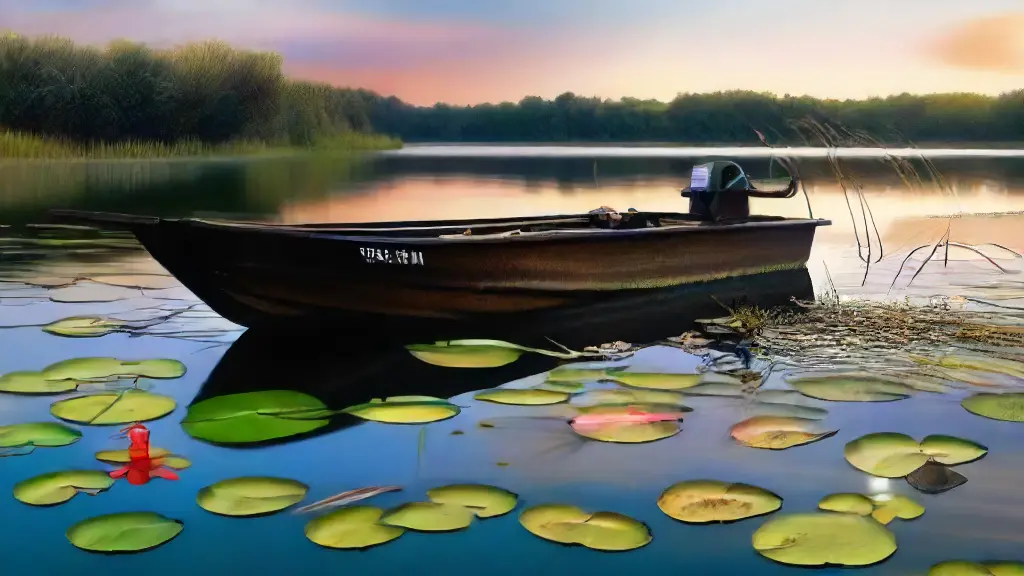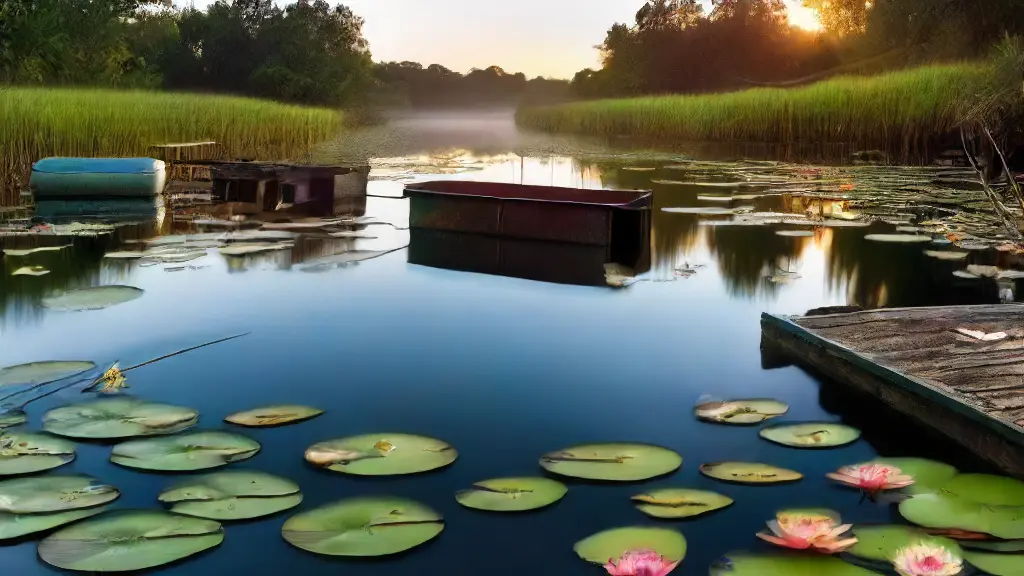Best Soft Plastics for Fishing in Weeds

As anglers navigate the dense and tangled world of aquatic vegetation, a reliable soft plastic bait can be the key to unlocking a successful fishing experience.
What Soft Plastics Work Best in Weeds
Fishing in heavy vegetation can be a challenging and frustrating experience, as tangled line and snapped hooks can result in lost lures and wasted time. To overcome these obstacles, many anglers have turned to soft plastics, which offer unparalleled effectiveness in these unique environments.
Soft plastics have become a staple in many anglers’ tackle boxes, and for good reason.
They are incredibly versatile and can be used to target a wide range of species, from bass to panfish.
When selecting a soft plastic for weed fishing, there are several factors to consider. Size, shape, color, and texture are all important considerations, as they can greatly impact the effectiveness of the lure.
Cattail heads, in particular, can be a problem area for many anglers, as the thick vegetation can make it difficult to present lures effectively. By choosing the right soft plastic, anglers can effectively present their offerings among the heavy cover, cattails, and cattail heads.

How to Choose Soft Plastics for Heavy Vegetation
When it comes to fishing in heavy vegetation, the key to success often lies in the choice of soft plastic lures. With the right selection, you can increase your chances of landing a big catch.
Understanding the purpose of soft plastics in heavy vegetation is crucial to succeed.
Soft plastics play a vital role in catching bass in dense vegetation.
The size, shape, and color of soft plastics also significantly impact their effectiveness. A larger soft plastic may be necessary for thick vegetation, while a smaller one might be better suited for thinner areas.
Factors to Consider When Selecting Soft Plastics for Heavy Vegetation
Density of vegetation is a crucial factor to consider when choosing the right soft plastic. Thicker vegetation calls for a more substantial soft plastic that can withstand the heavy cover.
Water clarity also plays a significant role in selecting the right fluorocarbon line.
Key Considerations for Soft Plastic Lures in Heavy Vegetation
- Soft plastics with a larger size and more substantial shape are often more effective in thick vegetation, while smaller ones are better suited for thinner areas.
- The color of the soft plastic can also impact its effectiveness, with darker colors often being more visible in murky water and lighter colors being more visible in clearer water.
- Fluorocarbon line is often preferred in heavy vegetation due to its low visibility and ability to withstand the heavy cover.
- The density of the vegetation is a crucial factor to consider when choosing the right soft plastic, with thicker vegetation requiring a more substantial soft plastic that can withstand the heavy cover.
What Attracts Bass in Dense Cover
In the world of recreational fishing, dense cover presents a unique set of challenges and opportunities. Understanding what draws bass to these environments is crucial for landing a big catch.
One of the primary factors that attracts bass in dense cover is the structure and complexity of the environment.
This can include features such as logs, rocks, and weed beds, which provide a sense of security and ambush points for bass.
Fish attractant mixers can also play a role in attracting bass to these areas.
Visual attraction is another key factor in dense cover fishing.
Bass are drawn to colors and patterns that stand out against the surrounding environment, making bass soft plastics with contrasting colors and shapes effective in these areas.
The movement and action of a lure can attract bass in dense cover, as they are sensitive to vibrations and disturbances in the water. Bass tackle that mimics the natural scent and appearance of fish attractants, fish attractant additives, additives, fish attractant mixers, bass fishing, bass lures, and bass soft plastics.
How to Rig Soft Plastics for Weedless Fishing
In heavy vegetation, water conditions play a crucial role in determining the success of a fishing trip. When navigating these often-challenging environments, a reliable and versatile tackle choice is essential.
The first step in successful weedless soft plastic fishing is to choose the right soft plastic for the job.
Choosing the Right Soft Plastic for Heavy Vegetation
Choosing the right soft plastic body style for dense vegetation can be crucial, with certain designs proven to perform better than others.
For example, curly tail soft plastics have been shown to be effective in heavy vegetation, as their action and movement help to attract fish.
Fishing in murky or clear water, using soft plastics that mimic baitfish or shad can be highly effective, especially when fish are relating to structural elements. Rigging Techniques for Weedless Soft Plastics The wrap and stick rigging method is ideal for bass gear, considering water clarity, water conditions, water depth, water temperature, weather conditions, current strength, and water flow.
Facts About Weedless Soft Plastic Fishing
- Curly tail soft plastics are effective in heavy vegetation due to their action and movement.
- Fishing with soft plastics that mimic baitfish or shad can be highly effective, especially when fish are relating to structural elements.
- The wrap and stick rigging method is ideal for bass gear, considering various environmental factors.
- Fishing in murky or clear water can be successful with the right soft plastic choice.
Do Scents Matter in Weedy Waters
The thrill of reeling in a big catch is what drives many anglers to venture into the great outdoors. For those who frequent weedy lakes and ponds, the quest for success often relies on developing effective fishing techniques.
A weedy water, by definition, is a body of water that is overgrown with aquatic vegetation, such as cattails, lily pads, and other types of plants.
This dense growth can make it difficult for fish to swim and for anglers to reach them.
Understanding scent in these weeds is crucial for effective contour fishing.
Fish rely heavily on chemical signals to communicate with each other.
They use these signals to locate prey, detect predators, and even find potential mates. In weedy waters, scent plays a critical role in helping fish locate food amidst the dense vegetation. To be successful in structure fishing, it requires a combination of fishing technique, fishing tactics, and fishing strategies.
How to Select Soft Plastics for Water Clarity
Freshwater fishing demands a tactful approach, as clarity-challenged waters require a subtle presentation to entice hungry fish, making soft plastics an ideal choice for anglers seeking an edge.
When it comes to selecting soft plastics, one of the most crucial factors to consider is the material composition. Salt-impregnated soft plastics, for instance, can add an extra layer of realism to your lure, while scented soft plastics can attract fish with their irresistible aroma.
Understanding Soft Plastic Materials and Construction
Soft plastic materials come in a variety of textures and patterns, each designed to mimic the appearance and movement of real bait.
From curly tail worms to swimbaits, the right texture and pattern can make all the difference in catching fish while casting. Choosing the right presentation is crucial to ensure a successful retrieval.
Soft Plastic Materials and Construction Facts
- Soft plastic materials come in a variety of textures and patterns to mimic the appearance and movement of real bait.
- Salt-impregnated soft plastics can add an extra layer of realism to your lure, making them an attractive option.
- Scented soft plastics can attract fish with their irresistible aroma, increasing the chances of a catch.
- The right texture and pattern of soft plastic materials can make a significant difference in catching fish while casting.
Can You Use Soft Plastics in Murky Water
Fishing in murky water can be a daunting task, as even the most experienced anglers struggle to gauge the effectiveness of their lure. But with the right approach, soft plastics can be a game-changer.
Understanding the physics of light and visibility in murky water is crucial to maximizing the effectiveness of soft plastics.
As light is scattered and absorbed by particles in the water, making it difficult for fish to detect lures, soft plastics can interact with light in unique ways, slowly sinking into the water column and creating a tantalizing presentation that can be difficult for fish to resist, with a gentle fluttering motion that mimics the natural movement of bait. that can sink to the bottom slowly, suspend just off the bottom, or even flutter or fall at a slower rate than most soft plastics.
What Fishing Techniques Work Best in Weeds
Fishing in tangled aquatic vegetation can be a daunting experience, especially for those who aren’t prepared to tackle the unique challenges it presents. With the right techniques and strategies, it’s possible to navigate these challenging environments and attract those biting fish.
When it comes to choosing the right bait, understanding the difference between slow floating and fast floating baits is crucial.
Weedless worm hooks are ideal for cold water fishing, as they allow your bait to suspend in the water column, increasing your chances of catching fish.
Casting techniques also play a significant role in weedy waters. A gentle, sweeping motion with weedless hooks can help you navigate through dense vegetation, while a precise casting technique with weedless jigheads can help you target specific areas where fish are likely to be holding. When retrieving and setting the hook, it’s essential to use weedless hooks or jigheads.
Fishing in Weedy Waters
- Weedless worm hooks are ideal for cold water fishing, as they allow your bait to suspend in the water column, increasing your chances of catching fish.
- A gentle, sweeping motion with weedless hooks can help you navigate through dense vegetation, while a precise casting technique with weedless jigheads can help you target specific areas where fish are likely to be holding.
- When retrieving and setting the hook, it’s essential to use weedless hooks or jigheads.
- Slow floating baits are better suited for fishing in weedy waters, as they allow your bait to sink slowly and naturally through the vegetation, increasing your chances of attracting fish.
How to Cast Weedless Lures Accurately in Tight Spaces
How to Modify Lures to Be Weedless


